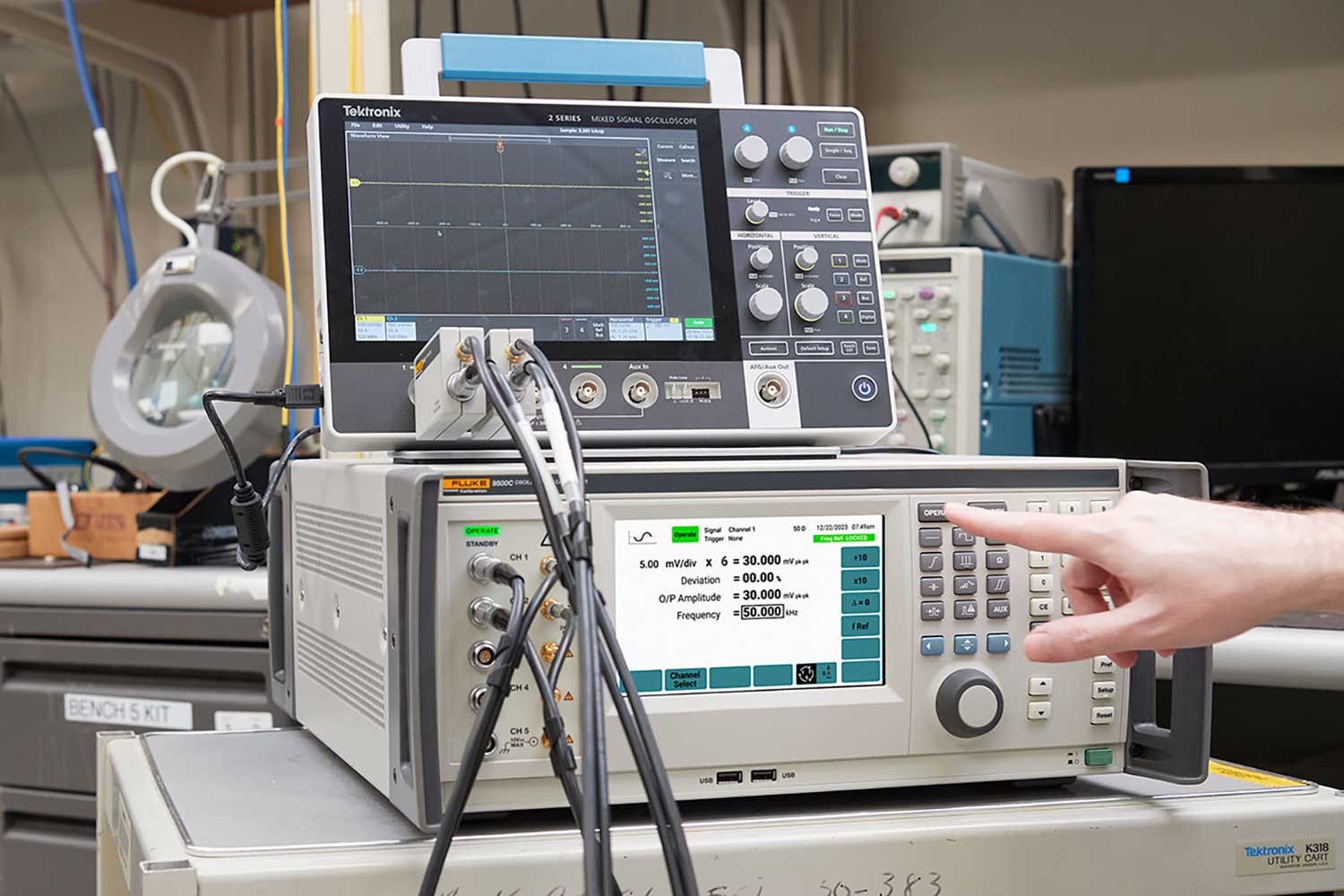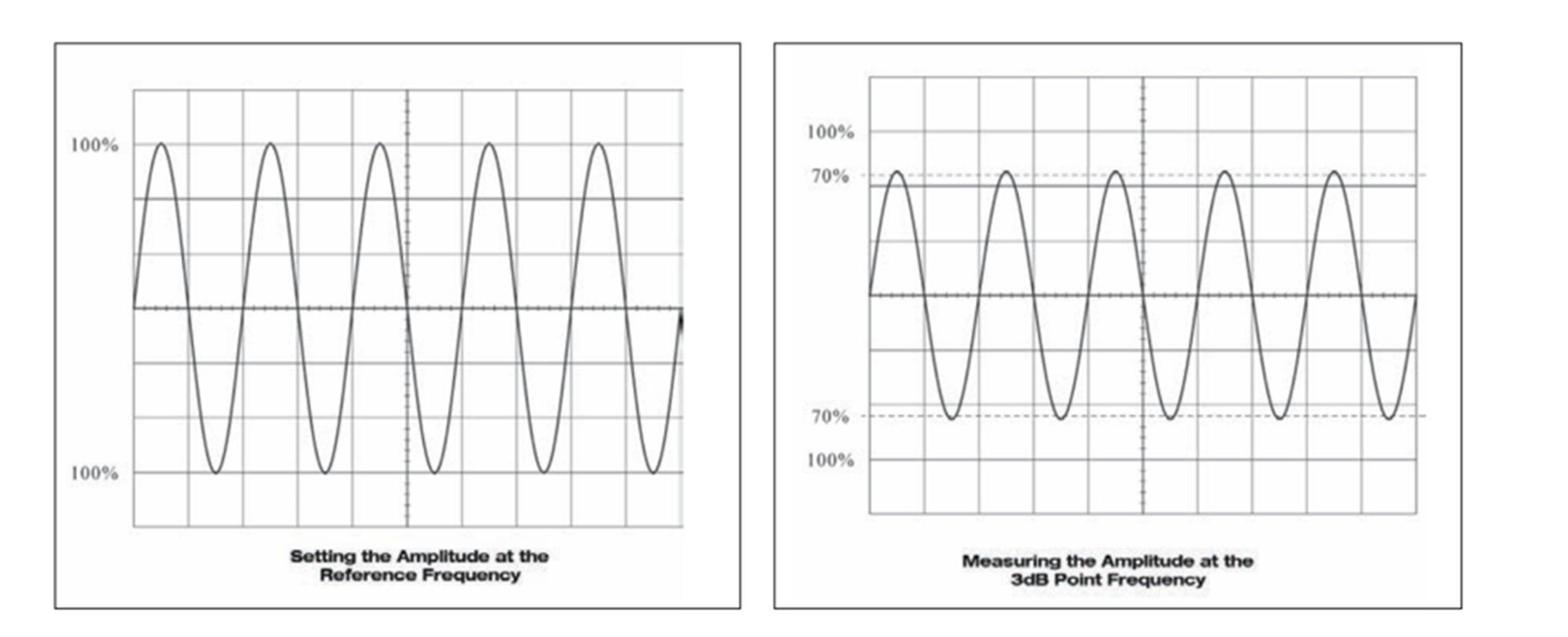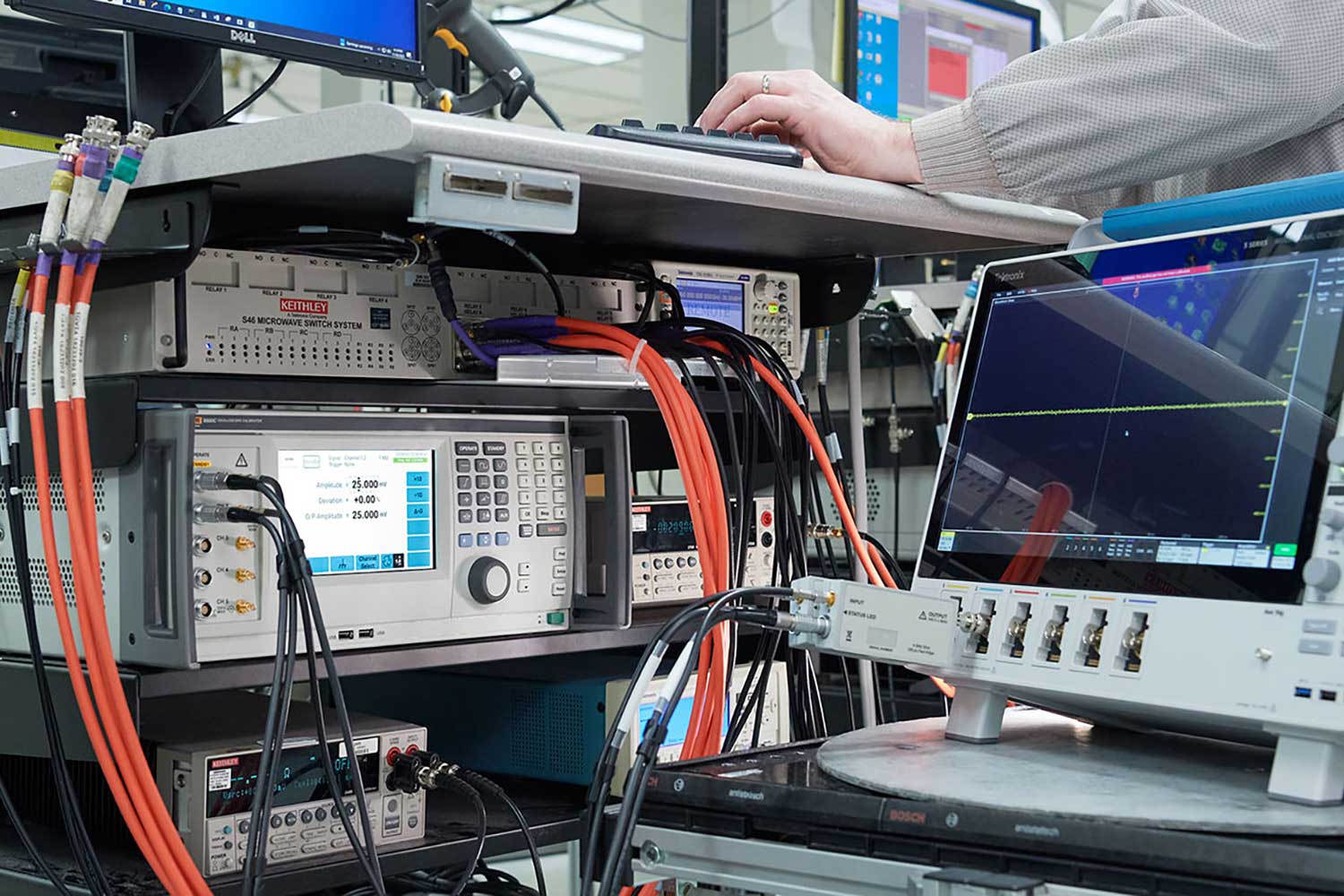- Other Fluke companies:
- Fluke
- Fluke Biomedical
- Fluke Networks
- Fluke Process Instruments
Fully automated true bandwidth testing of high-performance oscilloscopes
As technology continues to advance, oscilloscopes with bandwidths of several GHz are often the norm, now. However, traditional methods of bandwidth testing can be complex and introduce errors, particularly if bandwidth is calculated from a risetime measurement. This is where the Fluke Calibration 9500C Oscilloscope Calibrator comes in.

This device offers true bandwidth testing of scopes up to 4 GHz and can also perform accurate pulse response testing with fast return-to-ground edges with amplitudes between 5 mVp-p and 3 Vp-p along with rise/fall times up to 125 ps.
What is Bandwidth?
In relation to oscilloscopes, bandwidth is that of the vertical channels and carries the usual definition of the frequency at which the response falls by 3 dB from its low-frequency value, or to 70.7% in voltage amplitude terms. When dealing with oscilloscopes, bandwidth is often used as a generic performance differentiation, similar to how resolution is used with a digital multimeter. Comparing a 5.5-digit multimeter to a 4.5-digit multimeter is like comparing a 400 MHz scope to a 1 GHz scope.
How do we Measure Bandwidth?
The obvious approach to measure bandwidth is to use a sinewave signal and determine the frequency at which the displayed signal amplitude decreases by 3 dB (70.7%), relative to a low-frequency reference.

Why you don’t want to calculate bandwidth from a risetime test
However, using a process that is not from a dedicated oscilloscope calibration source requires you to consider external effects on your output. Without a dedicated oscilloscope calibration source, many have used leveled signal generators and power meter which can incorporate errors from the effects of generator accuracy, mismatch, and harmonic content when determining a peak-to-peak value from a calibrated RF power output. Plus, you may see additional complexities from the shape of the frequency response, its impact on roll-off at the 3 dB point, and accuracy of determining the bandwidth. That makes it difficult to obtain signals to the required frequency and accuracy for the higher bandwidth scopes, leading to calculating bandwidth from a risetime test.
Bandwidth can be related to risetime (tr); calculating an equivalent bandwidth from a measured risetime is known as imputing. The bandwidth (BW) can be imputed (calculated) from
BW=k/tr
- k=0.35 for Scopes <1 GHz
- k=0.4 to 0.45 for Scopes >1 GHz
which is only valid if the scope's response follows that of a theoretical Gaussian filter.
Unfortunately, most scopes do not follow a Gaussian response so errors are often introduced in the imputed bandwidth here. A simple risetime test will not provide information on the shape of the scope's frequency response. In the absence of a suitable sinewave source, this method has been popular as an alternative and is still used for the oscilloscopes with a very high bandwidth, above 6 GHz.
Using fast edges to test
A high integrity, fast edge is used to test the pulse response of the oscilloscope, measuring the vertical channel risetime and looking for any aberrations, areas of undershoot and overshoot, on the displayed edge.
Remember that the observed risetime depends on the speed of the edge used for testing and the actual risetime of the edge used should be known and corrected for; otherwise, there can be a significant error in the measurement.
Bandwidth testing with the Fluke Calibration 9500C Oscilloscope Calibrator
The Fluke Calibration 9500C Oscilloscope Calibrator can provide highly accurate leveled sine waveforms up to 4 GHz, calibrated directly in terms of peak-to-peak voltage.

In situations like this, when higher bandwidths and signal purity are needed, the 9500C with Active Head Technology™ allows you to be more efficient, effective, and productive, doubling the performance of a Multi-Product Calibrator.
By using Active Head Technology™, the Fluke Calibration 9500C can supply accurately leveled sinewaves up to 4 GHz , enabling true bandwidth testing of scopes to that level.
Continue reading
- High-frequency error sources in oscilloscope calibration
- How to calibrate an oscilloscope
- How to calibrate your oscilloscope for vertical accuracy
Recommended product
- Início
- Produtos
- Novos Produtos
- Calibração elétrica
- Calibração de RF
- Equipamento de aquisição de dados e de teste
- Calibração de temperatura
- Calibração de umidade
- Calibração de pressão
- Medidores de pistão
- Controlador/Calibradores
- Monitores de pressão
- Balanças de peso morto
- Calibradores manuais e monitores
- Handheld Pressure Calibrators
- Calibração de dados de aéreos
- Monitores ambientais
- Acessórios de calibração de pressão
- Sistemas personalizados de calibração de pressão
- Software de calibração de pressão
- Calibração de fluxo
- Ferramentas de Calibração de processo
- Software de calibração
- Serviço e suporte
- Todos os instrumentos de calibração
- Onde Comprar
- Notícias
- Treinamento e eventos
- Literatura e educação
- Serviço e Suporte
- Service Request (RMA)
- Planos de Serviço
- Suporte técnico
- Base de Conhecimento
- Acreditações
- Centros de assistência autorizados
- Calibration Certificates
- Community Forum
- My MET/SUPPORT
- Manuais de produto (Guias de usuário)
- Folhas de Dados de Segurança (SDS)
- Safety, Service, and Product Notices
- Downloads de software
- Sobre Nós


